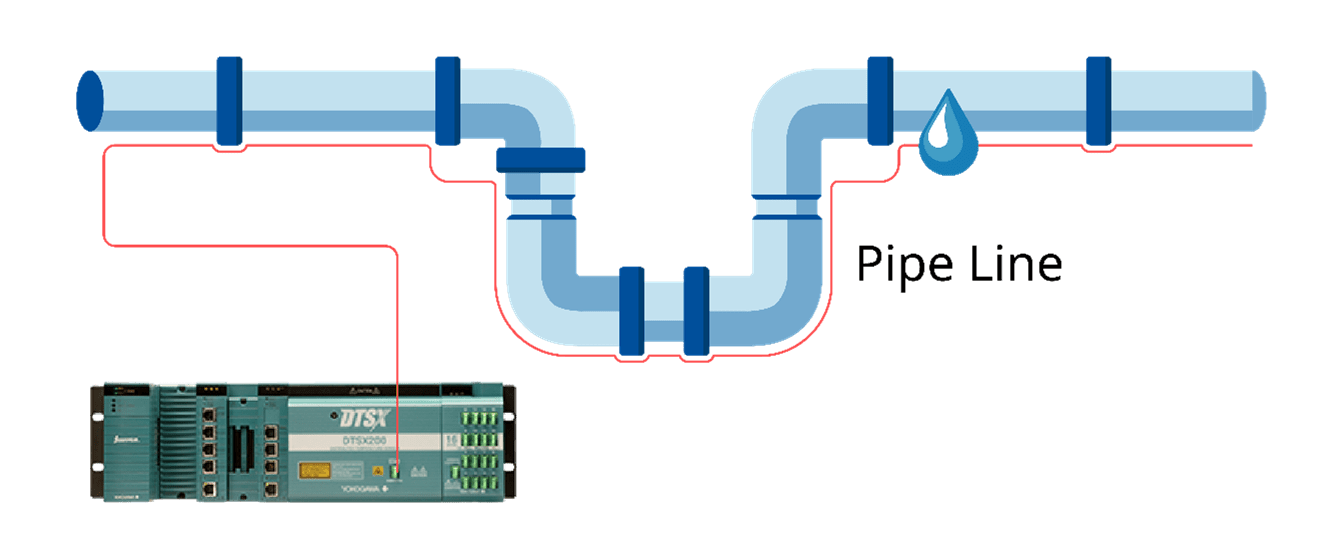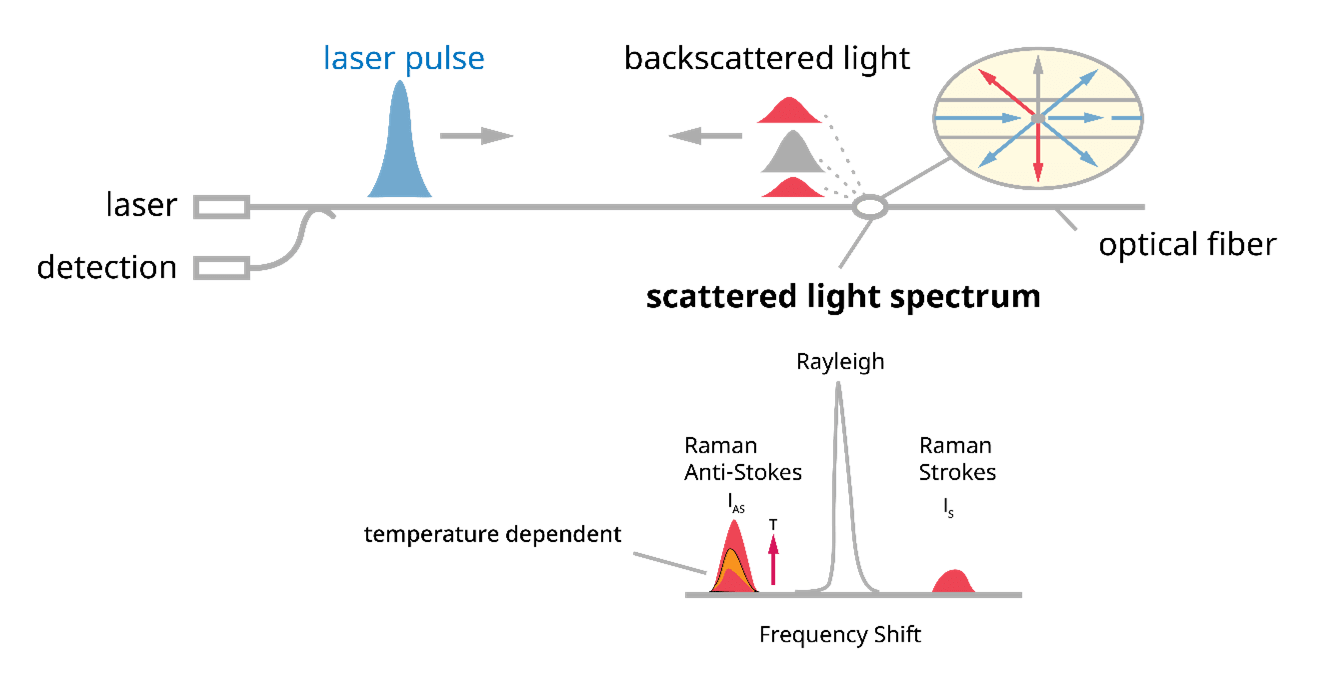Original publication - Chemical Processing eHandbook | Keep Your Cool When Sensing Temperature
Low-maintenance technology eliminates need for multiple devices
Temperature monitoring plays a key role in manufacturing processes in facilities across all industries. In North America, measurement is accomplished most often by placing individual temperature sensors and transmitters in key locations throughout the process. As global demands evolve, costs rise, and parts become harder to find, North American project leaders are seeking a more cost-effective and capable method. They are turning to an alternative solution that has been proven successful in thousands of sites globally for over twenty years.
Distributed temperature sensing (DTS) technology offers reduced costs in installation and configuration as well as throughout a facility’s lifecycle. Industry leaders know that meeting these goals will help improve safety and profits, not to mention promote a cleaner and greener facility with less waste.
How and where DTS is used
Since the 1980s, DTS technology has been proven to be a safe, non-intrusive method to identify the location of temperature changes quickly and accurately. Although it can be implemented in different ways, DTS measures temperature distribution over the length of a fiber optic cable where the fiber itself — rather than individual RTDs, thermocouples, or thermistors — is the sensing element (figure 1).

Figure 1. Temperature along a fiber optic cable is measured and returned to software for reading.
The cable can be run easily beside pipelines, around tanks, or along bus bars.
Distributed temperature sensing can provide thousands of accurate and precise temperature measurements over a long distance. A continuous temperature is measured at specified intervals where the fiber optic cable contacts the equipment, the measurement is returned to the DTS interrogator, and software is used to read and display the temperature (figure 2).

Figure 2. One form of DTS technology employs the Raman Scattering principle and optical time domain refractometry.
A detector is placed at the beginning of the cable to gather, analyze, and transmit information.
Whereas traditional temperature sensing in North America requires an individual device and transmitter for each temperature measurement, a single DTS installation can capture multiple temperature points. The technology is also useful when facility process teams are not sure where, along a line, the temperature might change. Measurements can be taken every two to five feet.
Creating efficiencies for stronger safety and operation
DTS has been used for decades to improve safety and operation by providing users with a better understanding of temperature conditions within their applications.
For example, pipeline operators have seen benefits in efficiently detecting leaks early through DTS. A DTS installation can be placed on a pipeline in 50km lengths with a single-ended monitoring configuration. The DTS optical fiber is placed above or below the pipe and potentially in the surrounding terrain to sense temperature profile abnormalities that could indicate a leak. The alerts from the DTS technology give teams early warning and a precise potential leak location so they can address conditions before larger problems arise.
DTS technology is also useful in detecting hot spots or increasing heat produced in power bus bars because it can overcome the challenges faced by other solutions. Because bus bars are surrounded by strong electric fields, conventional electric sensors such as thermocouple thermometers generally are not suitable. Since the fiber optic cable of the DTS technology is not affected by electromagnetic noise, DTS technology is an ideal solution.
Another challenge in bus-bar applications is the complicated path they might take through facilities could create blind spots for thermal imaging cameras. DTS overcomes the difficulties because the fiber optic cable can be installed directly on a bus bar and on the surface of a bus duct or cover.
As each event is detected in the fiber optic cable, well-designed systems communicate the conditions. Operators hundreds of miles from the process can be alerted via a SCADA or control system to the conditions. The alerts can even provide the necessary details that enable operators to communicate the type of event so that field technicians can arrive on site well equipped to address the situation.
Meet project deadlines and stay on budget
The thought of hundreds, or in some cases thousands, of temperature transmitters in a facility or along a line can be daunting and can tax almost any short- and long-term budgets. Add to that the planning for maintenance management and parts.
Because the DTS technology relies on fiber optic cable rather than individual transmitters, projects can more easily meet their installation goals. Users receive data along each 10-foot segment of cable. The solution immediately confers benefits to a project that would otherwise require as few as five temperature transmitters.
Installation is simple as teams can use common accessories to attach the cable to the equipment to be measured. DTS technology is typically non-intrusive and does not require access holes to be made through tanks, vessels, or other equipment. Those would not only complicate the installation but could require future maintenance. In some DTS solutions, an interrogator monitors the health of the fiber so no additional fiber test equipment is required.
Project deadlines are easier to meet also because the DTS technology does not require multiple sensors that need many sets of wires to connect them to a junction box or marshaling rack. Those racks, in turn, require additional equipment to connect them together to analyze temperature data.
Maintenance comes in to play as teams consider meeting budget in the future. DTS technology typically does not require monthly, weekly, or daily maintenance of any kind. An annual temperature check is recommended to see if the fiber is drifting, but typically that is the only maintenance required. Teams can also monitor fiber integrity, clarity, bends, or splicing issues.
Sum it up with reduced TCO
The total benefits of DTS add up to a lower total cost of ownership (TCO). In many applications, just a few temperature readings can provide enough information to solve a problem. Although that might be fine in some applications, prospective users should remember to perform a complete ROI analysis. If a section of pipeline is out of service or a bus bar catches fire, a facility can lose hundreds of thousands of dollars per day. Consider the expense of adding 20 sensors and transmitters to measure a few points along a line versus the savings of implementing a single cable with multiple temperature detectors.
The TCO includes a benefit to the environment. A pipeline leak is just one example of an environmental impact. The sooner a potential leak is found, the less impact it will have on the surrounding landscape and the less opportunity for fines and damaged reputations. DTS technology quickly and accurately pinpoints leaks, often before traditional technology. Even small leaks result in a temperature differential that can be detected by a DTS system.
For decades, facilities around the world have found savings with the DTS technology. Teams in North America are learning today and will benefit in the future.
Industries
-
Chemical
Chemical plants rely on continuous and batch production processes, each posing different requirements for a control system. A continuous process calls for a robust and stable control system that will not fail and cause the shutdown of a production line, whereas the emphasis with a batch process is on having a control system that allows great flexibility in making adjustments to formulas, procedures, and the like. Both kinds of systems need to be managed in available quality history of product, and to be able to execute non-routine operations. With its extensive product portfolio, experienced systems engineers, and global sales and service network, Yokogawa has a solution for every plant process.
Related Products & Solutions
-
DTSX1 Fiber Optic Heat Detector
DTSX1 is an all-in-one heat detection solution. It is a self-contained, ready-to-install solution.
-
DTSX200
- DTSX200 distributed temperature sensing
- Short range, low sampling resolution capable product
- Measurement range up to 6km
- 0.1 °C temperature accuracy
- 19" rack
-
DTSX3000
The DTSX3000 is the long range, high accuracy product, with a measurement range of up to 50km, a temperature accuracy of 0.01 °C, and 19" rack design.
-
Distributed Fiber Optic Temperature Sensor
Enhance process visibility and safety with cost-effective measurement solutions.
Have Questions?
Contact a Yokogawa Expert to learn how we can help you solve your challenges.